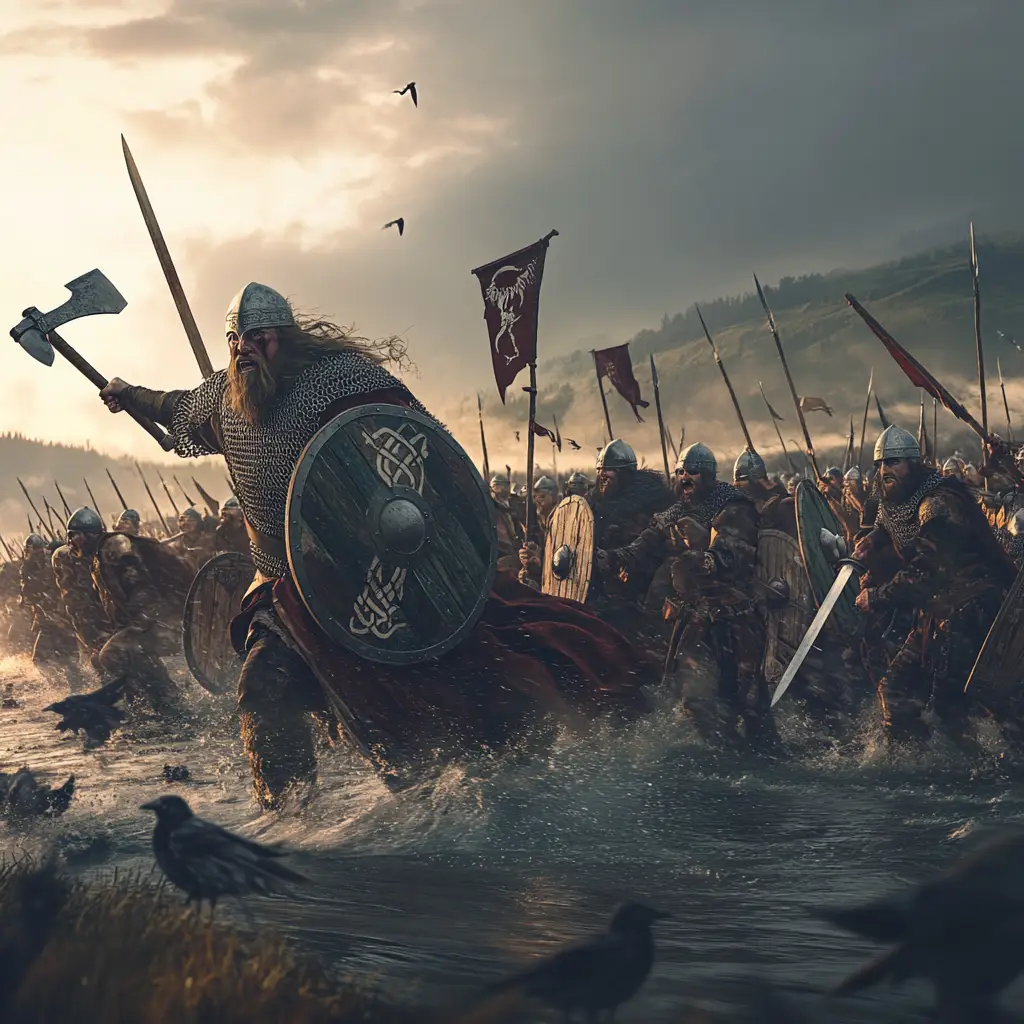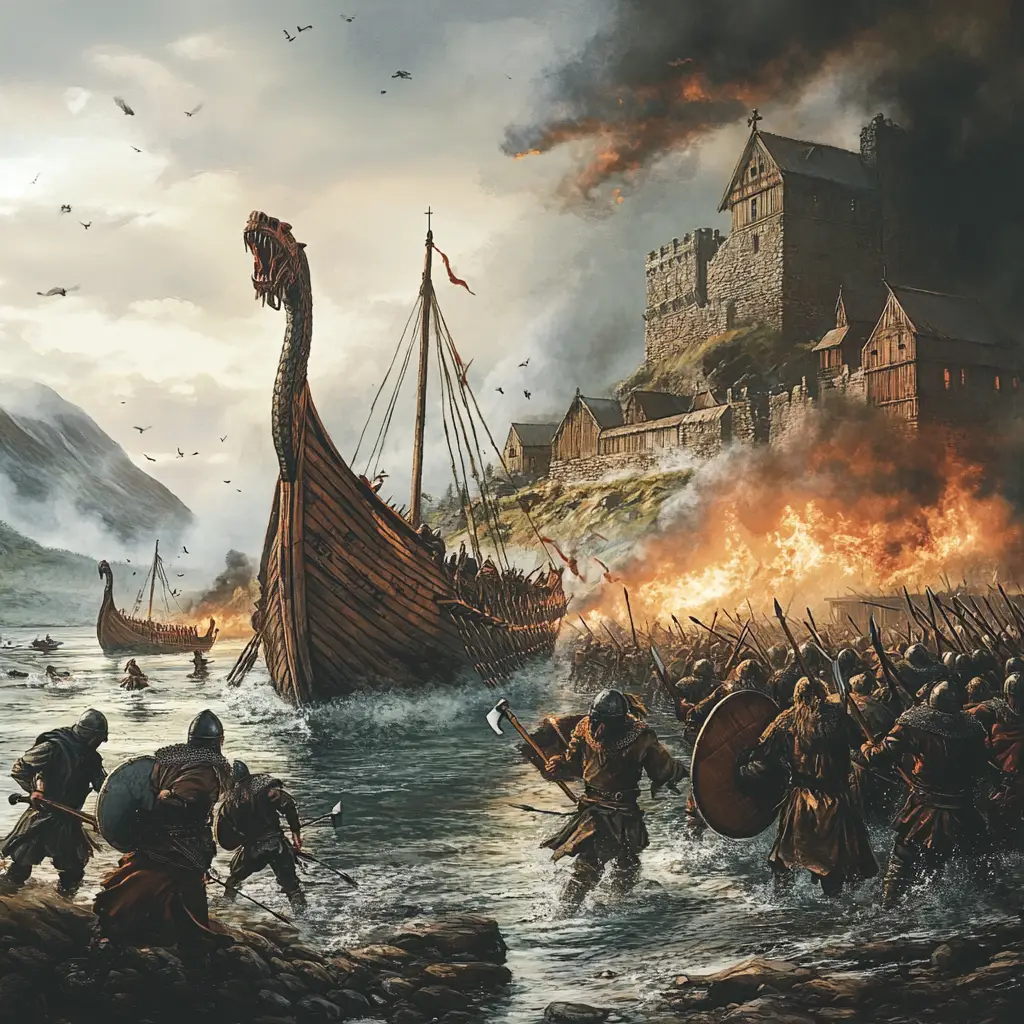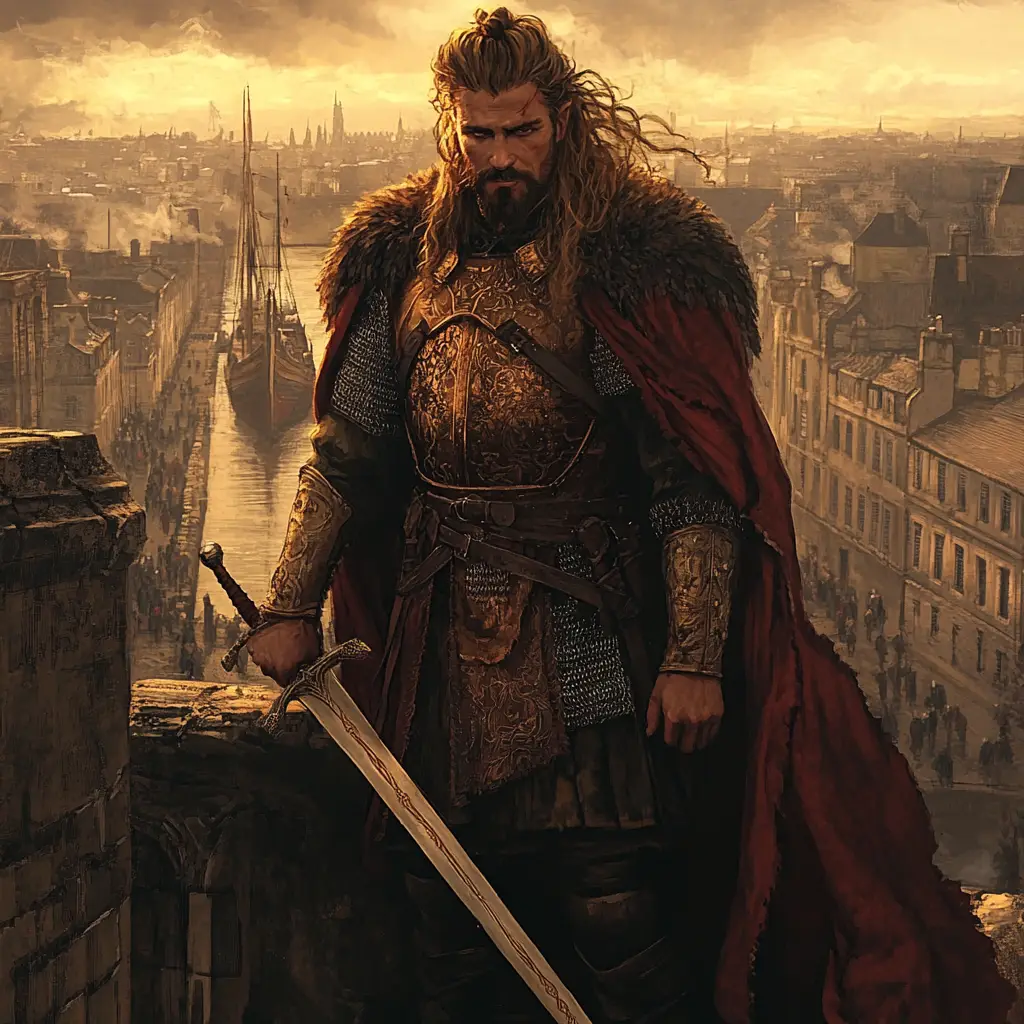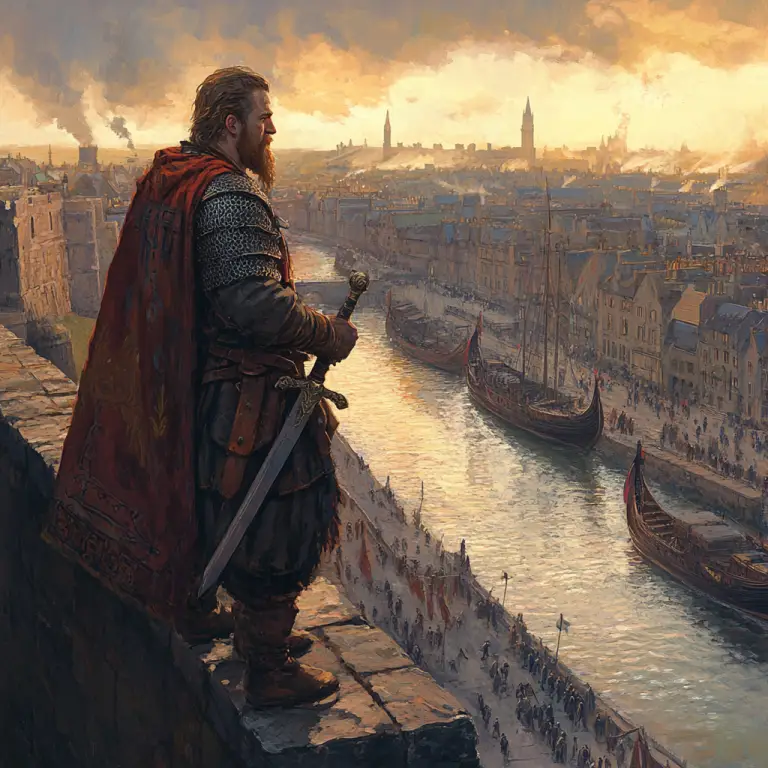The Uí Ímair (meaning “descendants of Ímar”) was a powerful Norse-Gaelic dynasty that dominated much of Ireland, Scotland, and the surrounding isles from the 9th to 11th centuries. They were likely descendants of the Viking leader Ímar (Ivar), often identified with Ivar the Boneless, a legendary Norse warlord. This dynasty played a crucial role in the Viking presence in the British Isles, ruling over key regions such as Dublin, the Hebrides, the Isle of Man, and parts of Scotland and England.
Origins of the Uí Ímair
The dynasty is named after Ímar (Ivar), a 9th-century Norse leader who appeared in Irish annals around 857 AD.
Ímar may have been linked to the Great Heathen Army that invaded Anglo-Saxon England in the 860s.
The Uí Ímair ruled Dublin, which became a major Viking stronghold and trading hub.
Key Territories of the Uí Ímair
Kingdom of Dublin – Established in 841 AD, this was the center of Uí Ímair power in Ireland.
Kingdom of the Isles – Included the Hebrides, Isle of Man, and western Scotland.
York (Jórvík) – The dynasty briefly controlled Viking Jórvík (modern-day York), an important Norse settlement in England.
Waterford, Limerick, and Other Norse Settlements – Members of the dynasty were involved in Norse rule in other parts of Ireland.
Notable Rulers of the Uí Ímair
Ímar (d. 873?) – The possible founder of the dynasty and ruler of Dublin.
Sitric Cáech (d. 927) – Ruler of Dublin and later York; fought against the Anglo-Saxons.
Gofraid ua Ímair (d. 934) – Controlled Dublin and fought in Ireland and Scotland.
Amlaíb Cuarán (d. 980) – One of the last major Uí Ímair rulers of Dublin before its defeat by the Irish High King Brian Boru.
Decline of the Uí Ímair
The dynasty began to weaken after Brian Boru’s victory at Clontarf (1014).
The Irish kings slowly regained control of Norse settlements.
By the late 11th century, the Uí Ímair influence had faded, replaced by local Gaelic rulers and later, Norman invaders.
Legacy of the Uí Ímair
The dynasty played a key role in Norse-Gaelic culture, blending Viking and Irish traditions.
They helped establish Dublin as a major economic and political centre.
Many Gaelic families and clans in Ireland and Scotland trace their ancestry to Norse rulers, including members of the Uí Ímair.
The Uí Ímair dynasty was one of the most powerful Viking families in the British Isles, shaping the course of history through warfare, trade, and political alliances.



